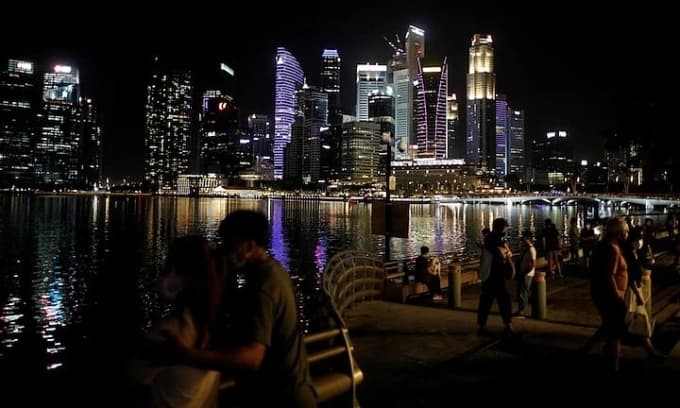Singapore’s near universal sense of safety
Singapore once again sits at the top of global safety perceptions. In the latest Gallup Global Safety Report, 98 percent of adults in the city state said they feel safe walking alone at night where they live. It is the 12th time Singapore has led this ranking since Gallup began asking the question in 2006. The 2025 report reflects more than 145,000 interviews across 144 countries and territories conducted in 2024, offering a broad snapshot of daily security as people experience it.
Perceived safety in Singapore has been unusually stable in recent years, never dipping below 94 percent in the past five measurements. The sense of security spans genders in near parity, with 98 percent of men and 97 percent of women saying they feel safe walking alone at night. Gallup points to low crime, effective law enforcement and strong public order as the main ingredients behind the city state’s consistent results.
Globally, the survey records a new high in feelings of safety. Seventy three percent of adults worldwide say they feel safe walking alone at night, the highest figure in Gallup’s trend. This rise comes despite a year that also saw the largest number of armed conflicts since World War II, underscoring how local conditions, trust and community strength shape how people experience safety day to day.
Singapore’s lead sits within a cluster of very high performers. Tajikistan follows at 95 percent, with China and Oman at 94 percent and Saudi Arabia at 93 percent. At the other end of the scale, South Africa ranks lowest, with just 33 percent of adults saying they feel safe walking alone at night. Perceptions there have been stubbornly low for years and remain influenced by high levels of violent crime and limited policing coverage in many communities.
How Gallup measures safety
Gallup measures feelings of safety with a simple question: “Do you feel safe walking alone at night in the city or area where you live?” Responses come from nationally representative, probability based samples of adults aged 15 and older. Interviews are conducted by phone or in person, typically with about 1,000 or more respondents in each country. The margin of sampling error ranges between plus or minus 3.3 and 5.4 percentage points at the 95 percent confidence level.
What the question captures
Feeling safe walking alone after dark is a practical test of daily security. It reflects what people sense on the street, at transit stops and on the walk to and from home or work. Lighting, the visibility and responsiveness of police, recent crime events, neighborhood design and social norms all influence how people answer. The United Nations uses Gallup’s measure as an indicator for Sustainable Development Goal 16, which seeks to promote peaceful and inclusive societies. The question helps track progress toward reducing violence and improving people’s sense of security in their own communities.
The Law and Order Index
Gallup also aggregates safety and crime responses into its Law and Order Index, a 0 to 100 score that captures people’s direct experiences and trust in institutions. The global index score in 2024 was 83. The index combines four questions:
- Do you feel safe walking alone at night in the city or area where you live?
- Do you have confidence in the local police force where you live?
- Within the last 12 months, have you or a household member had money or property stolen?
- Within the past 12 months, have you been assaulted or mugged?
Countries that do well on the index tend to combine low levels of personal victimization with high trust in local police and public order. Singapore places at or near the top of this index, mirroring its position on the nighttime safety question.
Why does Singapore score so high?
Several reinforcing factors help explain Singapore’s near universal sense of safety. Crime levels are low by international standards, and enforcement is consistent and visible. The city’s urban layout, extensive camera coverage, clean and well lit public spaces and an efficient public transport system reduce points of vulnerability that often trouble large urban areas. These features, combined with a culture that prizes order and respect for rules, contribute to daily life that feels predictable and secure.
Trust in institutions also plays a central role. Confidence in local police is strong, and response times are generally quick. Courts move efficiently, fines and penalties are clear, and the sense of certainty around consequences deters opportunistic crime. Singapore’s small geography and integrated planning allow safety measures to be applied across neighborhoods and transport networks with unusual consistency, making daily experiences of safety similar in many parts of the country.
Replicating Singapore’s results can be difficult for larger, less dense or more decentralized countries. Gallup cautions that the city state’s combination of high income status, compact size and deep institutional trust is not easily reproduced. Yet several elements are transferable. Better lighting, reliable transit, responsive policing, support for victims, clear community standards and consistent enforcement all lift perceptions of safety even without matching Singapore’s starting conditions.
How the rest of the world compares
Gallup’s latest results show a familiar top tier of countries where very large majorities feel safe at night. The ten highest shares of adults who feel safe are:
- Singapore, 98 percent
- Tajikistan, 95 percent
- China, 94 percent
- Oman, 94 percent
- Saudi Arabia, 93 percent
- Hong Kong, 91 percent
- Kuwait, 91 percent
- Norway, 91 percent
- Bahrain, 90 percent
- United Arab Emirates, 90 percent
Regional patterns stand out. Asia Pacific has the highest regional share of adults who feel safe walking alone at night at 79 percent. Western Europe follows at 77 percent. Half of adults in Latin America and the Caribbean now say they feel safe, the first time the region has reached that level in Gallup’s trend. Sub Saharan Africa stands at 53 percent, which is better than its recent low during the pandemic but still below other regions. In the United States, 71 percent of adults say they feel safe at night, and in Canada the figure is 75 percent. In Europe, Norway leads with 91 percent.
On the other end of the spectrum, South Africa ranks lowest at 33 percent. Four of its neighbors, including Lesotho and Botswana, also sit near the bottom. In many communities there, persistent violent crime, a shortage of policing resources and long standing inequality shape how people feel after dark. Perceptions can and do change, however, when local institutions improve, services reach more neighborhoods and the justice system becomes more reliable.
Gender gap: who feels safe and who does not
The global rise in feelings of safety masks a persistent gap between men and women. Worldwide, 78 percent of men say they feel safe walking alone at night, compared with 67 percent of women. In 104 of the 144 countries and territories surveyed, the difference between men and women is at least 10 percentage points. The gap is large in several high income countries and reflects differences in everyday risks, harassment, public transport use, and access to safe, well lit routes at night.
Singapore is an outlier for its parity. Ninety eight percent of men and 97 percent of women report feeling safe. Extensive lighting, visible policing, efficient transport and predictable enforcement appear to narrow the gap that persists elsewhere. This pattern suggests that investments targeting conditions that disproportionately affect women, including transit safety, street lighting and swift responses to harassment and assault, can produce broad gains in confidence.
Perception vs reality: strengths and limits of the metric
Perception is not a crime rate, yet it matters. When people feel safe to walk at night, they engage more with local communities, make fuller use of public spaces and support local businesses after dark. The reverse is also true. Fear of crime keeps people at home, reduces transit use and drains vitality from neighborhoods. Gallup’s measure helps track these lived experiences across borders using a consistent question.
There are limits. The meaning of “walking alone at night” varies across cultures and geographies. In some places, few people walk alone late at night even if streets are safe, while in others evening activity is part of daily life. Rural and urban settings differ. Media coverage, a recent high profile incident or a local rumor can shift perceptions without a corresponding change in crime statistics. Small year to year changes within countries may fall inside the margin of error, so trends tell a more reliable story than single year swings.
Feelings of safety also depend on trust in local police, the presence of neighbors and small design choices that reduce risk at the edges, such as lighting in alleyways, sight lines near bus stops and the condition of pedestrian paths. The Law and Order Index captures some of these links by combining confidence in police with experiences with theft and assault. Policymakers and the public should read the rankings as a window into daily life, not a standalone crime table.
What it means for cities and travelers
For city leaders, the lesson is clear. Raising feelings of safety takes more than lowering headline crime figures. The cities that score well blend hard measures, such as visible patrols and reliable emergency response, with design and social investments that make streets feel safe after dark. The focus is local. People judge safety on the route they take to the bus, the footpath outside their home and the park they cross to reach a store.
- Prioritize lighting on streets, paths and transit stops where foot traffic is highest after dark.
- Improve reliability and visibility in public transport, including cameras, trained staff and rapid response to incidents.
- Build trust in local police with community presence, fair treatment and clear communication.
- Support victims and witnesses so crimes are reported and addressed, which builds confidence for everyone.
- Design safer spaces by trimming sightline obstructions, activating public areas at night and maintaining clean surroundings.
- Track both crime and perceptions with regular local surveys to see whether investments change how people feel.
For travelers, the Gallup results are not a travel advisory. They do help set expectations about how locals experience their own streets after dark. Real time conditions vary city to city and neighborhood to neighborhood. It is smart to check official guidance, use common sense routines and match plans to comfort level. The findings show that in many countries, including Singapore and several Gulf states, residents say they feel safe after dark. That does not remove the need for basic precautions, but it does suggest that daily life in those destinations supports a strong sense of security.
At a Glance
- Singapore leads the world, with 98 percent of adults saying they feel safe walking alone at night.
- Global feelings of safety reached a record high of 73 percent in the latest survey.
- The measure comes from Gallup’s question used by the United Nations to track progress toward SDG 16.
- Gallup’s Law and Order Index, based on four questions, recorded a global score of 83 in 2024.
- Top performers after Singapore include Tajikistan, China, Oman and Saudi Arabia, all above 90 percent.
- Norway is Europe’s safest on this question at 91 percent.
- South Africa ranks lowest, with 33 percent of adults feeling safe walking at night.
- Asia Pacific and Western Europe have the highest regional levels of perceived nighttime safety.
- A large gender gap persists worldwide, 78 percent of men versus 67 percent of women feel safe.
- Singapore shows near gender parity, offering clues for policies that raise confidence for everyone.




